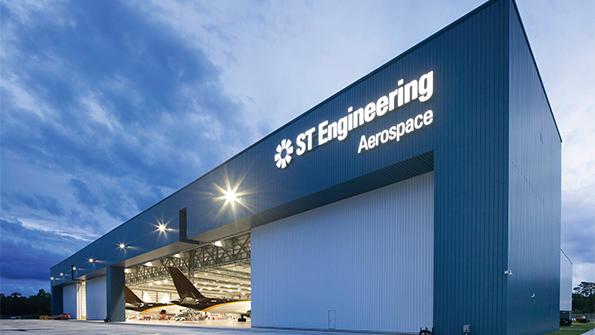
When COVID-19 struck, Singapore’s air traffic was decimated following border closures and strict travel restrictions. With no domestic market, aircraft movements at Singapore Changi Airport declined from 382,000 in 2019 to 125,000 in 2020. Capacity of flag carrier Singapore Airlines (SIA) slumped more than 80% in 2020, and it has put the majority of its fleet in storage in Singapore and in Australia’s Alice Springs.
The depressed conditions and reduced demand during the pandemic has forced a number of MRO players to carry out cost-cutting measures, including layoffs. Eagles Services, the Pratt & Whitney and SIA Engineering Co. (SIAEC) joint venture engine overhaul company, had to let go more than 140 staff, while Rolls-Royce slashed 240 positions, or 24% of its workforce in Singapore.
However, despite the gloomy environment, Singapore Technologies (ST) Engineering has been able to remain profitable, largely thanks to newfound interest in its passenger-to-freighter (P2F) conversions, specifically for the Airbus A320/321 family. Launched in 2015 with a handful of orders, it was propelled to new heights during 2020 as cargo demand rocketed and A320 feedstock prices dropped, in line with early retirements of the aircraft. A recent order from lessor BBAM Limited Partnership puts the type’s order count at 20, with work expanding from the Seletar plant in Singapore to China and the U.S.
ST Engineering also secured a second 767-300BCF conversion line from Boeing, adding to its widebody portfolio alongside the Airbus A330P2F.
It is the optimistic prospects for this segment that drove the incorporation of Juniper Aviation Investment by ST Engineering and state-owned Temasek holdings. The company will focus on leasing freighters, with the goal to have 20-25 aircraft by 2025.
For the first half of 2021, ST’s commercial aerospace segment realized earnings before interest and taxes of S$102 million ($76 million), 37% higher year-over-year, and S$874 million worth of new contracts were secured in second-quarter 2020.
SIAEC was severely affected in 2020 by the sharp decline in aircraft movements and related loss of line maintenance activity at Changi. During that period, SIAEC also reshuffled its portfolio, selling its entire 51% stake in the Aviation Partnership Philippines Corp. to Cebu Air and taking full ownership of SIA Engineering Philippines Corp. from the same partner. It also acquired the remaining 35% of Heavy Maintenance Services Singapore from Airbus Services, giving it full ownership of the A380 and A350 MRO facility.
The company used the slack period to ramp up its second phase of digitalization efforts, which will pump more than S$40 million over the next three years into digitalization, automation and lean manufacturing methodology. After losses in fiscal 2020-21, SIAEC edged back into the black in the first quarter of fiscal 2021-22, with a S$14.5 million net profit.
However, the survival of Singapore’s entire aviation industry (including MRO) is being sustained by the government’s sweeping Job Support Scheme (JSS). During the onset of the pandemic, the JSS covered as much as 75% of all wages in the country, and while this support has tapered off for other industries, the aviation and aerospace sector continues to enjoy the most support, including 10% of wages until this month. SIAEC has noted that without the JSS subsidies, it would have incurred a loss of S$24.1 million in the first quarter of this fiscal year and S$192.4 million in the last fiscal year.
The government has yet to announce a new wage subsidy plan, as most of the help in the interim has turned to support for the food and beverage sector, which was heavily affected by flash lockdowns. Nonetheless, the coming months will likely be brighter for the MRO sector in Singapore as the country gradually relaxes border restrictions and SIA continues the return of aircraft from deep storage.
Aircraft movements at Changi in the past two months have increased more than 80% year-over-year, which is also reflected in SIAEC’s maintenance activity.
ST Engineering was also able to benefit from the recovery of domestic aviation in the U.S. just as it commences expansion work at its Pensacola, Florida, facility. Once completed, it will add around 1.5 million worker hours there annually.

